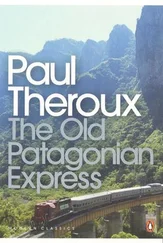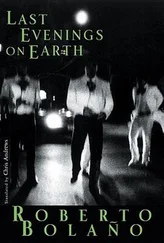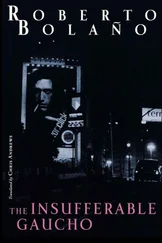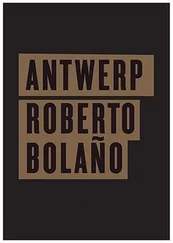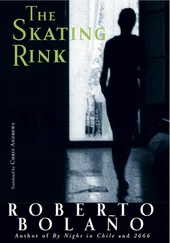The structure of the book is modeled on the work of the English historian. The second introduction (which is in fact the real prologue) is entitled “The Elusiveness of History,” exactly like Toynbee’s prologue. The following sentence from Toynbee expresses one of the pivotal themes of Sibelius’s introductory text: “The historian’s view is conditioned, always and everywhere, by his own location in time and place; and, since time and place are continually changing, no history, in the subjective sense of the word, can ever be a permanent record that will tell the story, once for all, in a form that will be equally acceptable to readers in all ages, or even in all quarters of the Earth.” Sibelius, of course, is animated by intentions of an entirely different nature. In the final analysis, the British professor’s aim is to testify against crime and ignominy, lest we forget. The Virginian novelist seems to believe that “somewhere in time and space” the crime in question has definitively triumphed, so he proceeds to catalogue it.
The first part of Toynbee’s book is entitled “The Political Structure of Hitler’s Europe,” which becomes, in Sibelius, “The Political Structure of Hitler’s America.” Both parts comprise six chapters, but where Toynbee’s account is factual, only a distorted reflection of reality is perceptible in Sibelius’s welter of stories. His characters, who sometimes seem to have stepped straight out of a Russian novel ( War and Peace was one of his favorites) and sometimes to have escaped from an animated cartoon, move, speak and indeed live (although their lives have little continuity) in chapters that seem inhospitable to fiction, such as the fourth, “Administration,” in which Sibelius imagines in detail life in (1) the incorporated territories, (2) the territories under a chief of civil administration, (3) the appended territories, (4) the occupied territories, and (5) the “zones of operation.”
It is not unusual for Sibelius to spend twenty pages simply introducing a character, specifying his physical and moral traits, his tastes in food and sports, his ambitions and frustrations, after which the character vanishes, never to be mentioned again in the course of the novel; while others, who are barely given names, reappear over and over, in widely separated locations, engaged in dissimilar if not incompatible or mutually exclusive activities. The workings of the bureaucratic machinery are described implacably. The 250 pages of the fourth chapter of the second part, “Transport,” subdivided into (a) Position of German Transport at the Outbreak of the War, (b) Effects of the Changing Military Situation on the German Transport Position, (c) German Methods of controlling Transport throughout America, and (d) German Organization of American Transport, are overwhelming for all but the specialist.
The stories are often borrowed, as are almost all the characters. In the third chapter of the second part, “Industry and Raw Materials,” we find Hemingway’s Harry Morgan and Robert Jordan, along with characters from Robert Heinlein and plot devices from Reader’s Digest . In the seventh chapter, “Finance,” section (b), “German Exploitation of Foreign Countries,” the informed reader will recognize a series of characters (sometimes Sibelius doesn’t even go to the trouble of changing their names!): Faulkner’s Sartorius and the Snopes (in “Reichkreditkassen ”); Walt Disney’s Bambi, and Gore Vidal’s John Cave and Myra Breckenridge (in “Seizure of Gold and Foreign Assets”); Scarlett O’Hara and Rhett Butler along with Gertrude Stein’s Herslands and Dehnings (in “Occupation Costs and other Levies”), which led a caustic critic to wonder whether Sibelius was the only American who had read The Making of Americans ; various characters from John Dos Passos, Capote’s Holly Golightly, and Patricia Highsmith’s Ripley, Charles Bruno and Guy Daniel Haines (in “Clearing Agreements”); Hammet’s Sam Spade and Vonnegut’s Eliot Rosewater, Howard Campbell and Bokonon (in “Manipulation of Exchange Rates”); and F. Scott Fitzgerald’s Amory Blaine, Gatsby and Monroe Starr, along with poems by Robert Frost and Wallace Stevens, and the abstract, oblique, shadowy characters they imply (in “German Control over American Banking”).
Sibelius’s stories — the hundreds of stories that intersect willy-nilly, without apparently affecting one another, in The True Son of Job —are not guided by any principle, nor do they constitute an overall vision (as one New York critic absurdly supposed, comparing the book to War and Peace ). The stories simply happen, period — produced by the sovereign power of chance unleashed, operating outside time and space, at the dawn of a new age, as it were, in which spatio-temporal perception is undergoing transformation and even becoming obsolete. When Sibelius explains the political, economic and military order of the new America, he is intelligible. When he expounds the new religious, racial, judicial and industrial order, he is objective and clear. Administration is his strength. But it is only when his characters and stories, be they borrowed or original, infiltrate and overrun the painstakingly assembled bureaucratic machinery that he reaches the summit of his narrative art. The best of Sibelius is to be found in his tangled, implacably unfolding stories.
And, from a literary point of view, that is all there is to be found.
After the publication of his novel, Sibelius withdrew from the literary scene as quietly as he had arrived. He wrote articles for various war games magazines and fanzines in the United States. And he helped to design a number of games: one based on the battle of Antietam, another based on Chancellorsville, an operational Gettysburg game, a tactical Wilderness 1864, a Shiloh, a Bull Run. .
THE MANY MASKS OF MAX MIREBALAIS
MAX MIREBALAIS, alias MAX KASIMIR, MAX VON HAUPTMAN, MAX LE GUEULE, JACQUES ARTIBONITO
Port-au-Prince, 1941–Les Cayes, 1998
His real name was probably Max Mirebalais, although we will never know for sure. His first steps in literature remain mysterious: one day he turned up in a newspaper editor’s office; the next, he was out on the streets, looking for stories, or more often running errands for the senior staff. In the course of his apprenticeship, he was subjected to all the miseries and servitudes of Haitian journalism. But thanks to his determination, after two years, he rose to the position of assistant social columnist for the Port-au-Prince Monitor , and in that capacity, awed and puzzled, he attended parties and soirées held in the capital’s grandest houses. There can be no doubt that as soon as he glimpsed that world, he wanted to belong to it. He soon realized that there were only two ways to achieve his aim: through violence, which was out of the question, since he was peaceable and timorous by nature, appalled by the mere sight of blood; or through literature, which is a surreptitious form of violence, a passport to respectability, and can, in certain young and sensitive nations, disguise the social climber’s origins.
He opted for literature and decided to spare himself the difficult years of apprenticeship. His first poems, published in the Monitor ’s cultural supplement, were copied from Aimé Césaire, and met with a rather negative reception from certain intellectuals in Port-au-Prince, who openly mocked the young poet.
His next exercises in plagiarism demonstrated that he had learned his lesson: this time the poet imitated was René Depestre, and the result, if not unanimous acclaim, was the respect of a number of professors and critics, who predicted a brilliant future for the neophyte.
Читать дальше

